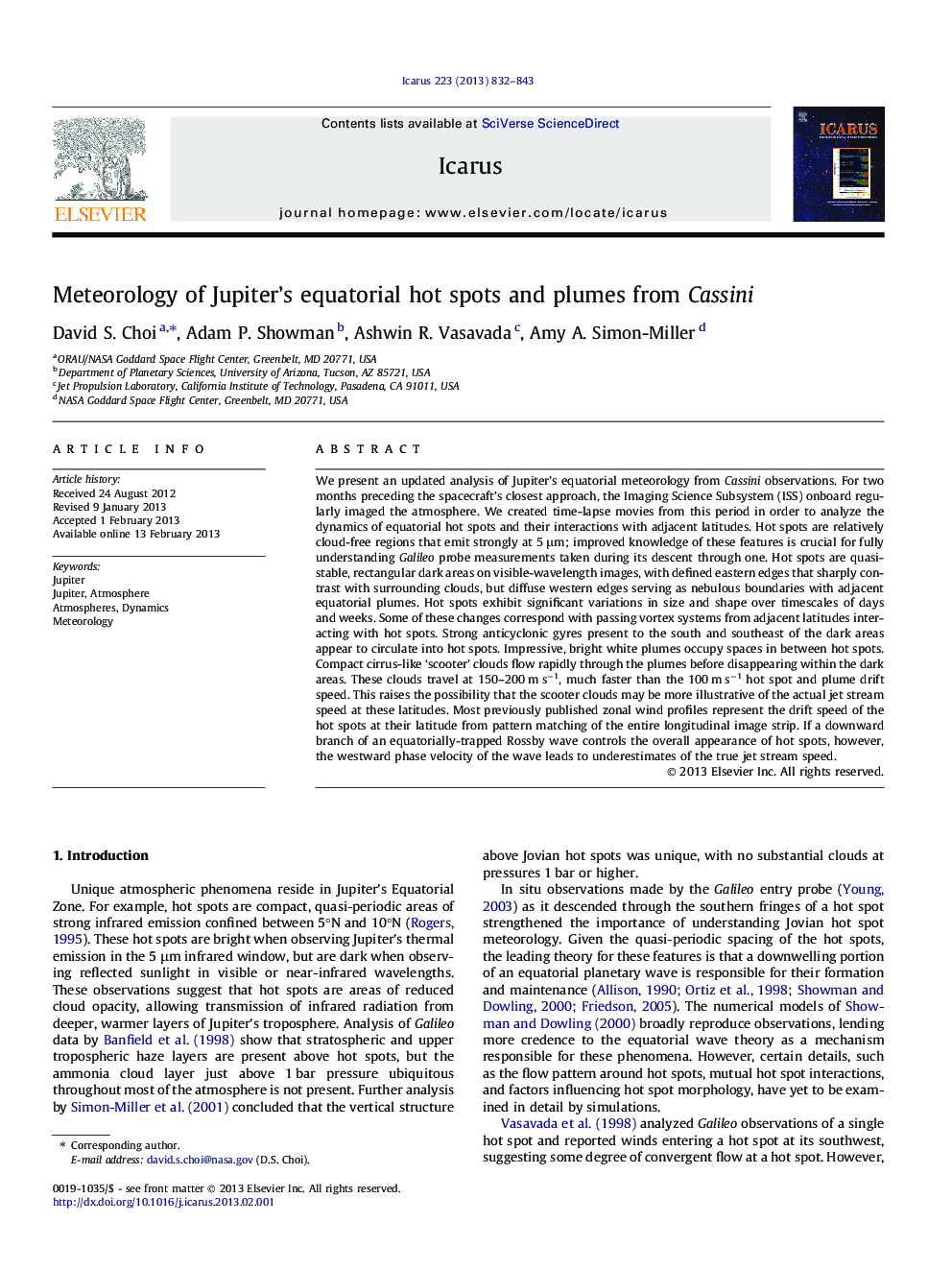| کد مقاله | کد نشریه | سال انتشار | مقاله انگلیسی | نسخه تمام متن |
|---|---|---|---|---|
| 1773360 | 1021127 | 2013 | 12 صفحه PDF | دانلود رایگان |

We present an updated analysis of Jupiter’s equatorial meteorology from Cassini observations. For two months preceding the spacecraft’s closest approach, the Imaging Science Subsystem (ISS) onboard regularly imaged the atmosphere. We created time-lapse movies from this period in order to analyze the dynamics of equatorial hot spots and their interactions with adjacent latitudes. Hot spots are relatively cloud-free regions that emit strongly at 5 μm; improved knowledge of these features is crucial for fully understanding Galileo probe measurements taken during its descent through one. Hot spots are quasi-stable, rectangular dark areas on visible-wavelength images, with defined eastern edges that sharply contrast with surrounding clouds, but diffuse western edges serving as nebulous boundaries with adjacent equatorial plumes. Hot spots exhibit significant variations in size and shape over timescales of days and weeks. Some of these changes correspond with passing vortex systems from adjacent latitudes interacting with hot spots. Strong anticyclonic gyres present to the south and southeast of the dark areas appear to circulate into hot spots. Impressive, bright white plumes occupy spaces in between hot spots. Compact cirrus-like ‘scooter’ clouds flow rapidly through the plumes before disappearing within the dark areas. These clouds travel at 150–200 m s−1, much faster than the 100 m s−1 hot spot and plume drift speed. This raises the possibility that the scooter clouds may be more illustrative of the actual jet stream speed at these latitudes. Most previously published zonal wind profiles represent the drift speed of the hot spots at their latitude from pattern matching of the entire longitudinal image strip. If a downward branch of an equatorially-trapped Rossby wave controls the overall appearance of hot spots, however, the westward phase velocity of the wave leads to underestimates of the true jet stream speed.
► We analyzed Jupiter’s equatorial meteorology from Cassini observations.
► We composed time-lapse animations showing the morphological evolution of hot spots.
► Significant changes correspond with passing vortices in adjacent latitudes.
► Rapidly moving scooter clouds suggest previous wind profiles underestimate jet speed.
Journal: Icarus - Volume 223, Issue 2, April 2013, Pages 832–843